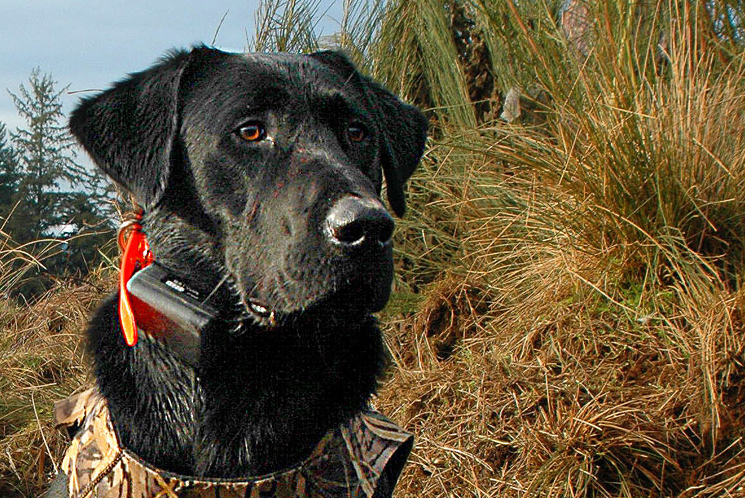About Guidance Training, Animal Training Devices, Connectivity
A Game-Changer Moment – The Connectivity Solution
Animal training devices are inherently plagued by a “connectivity” problem – which is the failure of the device to deliver its signal effectively and efficiently to the animal.
Overwhelmingly, frustrated owners do not know that there exists this connectivity issue – the proper fit of the device onto their animal; or even acknowledgment of this fact that their training signal is simply being lost before the animal even has a chance to receive it.
Here again – most manufacturers have exacerbated the problem by simply offering longer contact points, which do not reestablish connectivity either. Decades of fielding this problem led to my development of the Surface Conductor Grid System.
After gaining a following from many of the professional dog trainers who were seeking repairs on their remote training devices (replacing batteries, soldering broken wires, and such) – an issue relating to one of my new customer’s letter describing his operational difficulty began the process “Game-Changer Moment” for me and hence, my “Operational Disclosure” in this article.
As I began to evaluate his unit and read his letter; I immediately stopped and exclaimed, “Why don’t you solve this issue that has been plaguing the electronic dog training industry since its inception?” The issue was the Connectivity to his dog not with his product.
What occurred next? I solved that Connectivity issue for all users – hence my operational disclosure:
“Instead of using the standard two contact points – I utilized the area between these two contact points by increasing the number of connections from the device’s output so that the devices output could be dispersed to the animal utilizing many more closely spaced points of contact while exciting more nerve endings in the process.”
Working with animals for so long, I knew what I was looking for as I continued my experiments. This took about 3 days of focused testing to ensure myself that my idea worked and that I had indeed accomplished something rather remarkable and incredible. I could tell it was different as I had been the “test dog” at Tri-Tronics and knew the importance of the operational output characteristics of electrical impulse stimulation and the necessity for it to interface with the dog’s sensory systems. (I also had my electronic laboratory equipment to measure and record our test results).
However, that was only the beginning. A whole lot of design engineering was necessary in order to make a workable, sellable product. I needed to create as many of different prototypes with different configurational styles to know how I could engage and capture a dog’s sensory system at a high degree of effectiveness and efficiency.
This took a while – as what one does on the test bench and what one observes in-the-field are two completely different standards.
Additionally you need to be capable of assembling and manufacturing the device through cost effective measures with ease of delivery, and then, offer this product to the end-user to be utilized on a daily/monthly basis with no returns – that is another mountain to climb.
By 2000, and after consulting with a plastics molder/manufacturer, we were able to offer the first Surface Conductor Grid – and it worked according to the design criterion; but to manufacture for market penetration, it was too difficult hence too costly.
So back to the drawing board, but during that first exposure – the dogs were saying, “Yeh, we love it – make more”.
Just after my stint with Dogtra in Southern California and by 2004, we had acquired the funds and spent quality time with another mold manufacturer in the design for the next grid offering. We made several thousand pieces primarily because when you turn on the machine, it is less costly to make many than a few – just the nature of business.
After time spent with the Unleashed Technology project and by 2010, with over 5000 SCG-LBM grids built and sold; it was time to redesign. This new design would make it easier to produce, fit more devices, and continue the enhanced connection during training of dogs. This design was named the SCG-401K. Hence, the funding came from our 401k IRA and the name followed.
This design was a very good improvement. Not only was it more manufactureable, fit more after-market devices; it was able to “Connect” even better with dogs’ sensory systems.
Wow – and in 2010, we also received our patent 7,677,204. We are so happy that customers and their dogs would have a means to improve the connection between their device’s output and their dog’s sensory system. With the sales being such, and the dogs still saying, “Yes”, this set the stage for us to go on the record and state the hidden factors behind the design of the Surface Conductor Grid System.
The next indented sections were written to walk you through some historical facts hopefully explaining in more detail as to the method behind and what makes the “Connectivity” really work.
Since the very beginning, early 1967, the connectivity to an animal’s skin utilizing an electronic device that offers electrical impulse stimulation to gain control over that animal embodies a mathematical equation surrounding the output characteristics of the device offered.
This equation is made-up of a variety of resistive effects based upon the output characteristics of the onboard device, and its capability to interact and dispose of its energy spectrum to the animal’s sensory system.
To add to this equation, the animal’s own adaptive system must be in sync with the output structure and then for the dog to recognize that, in fact, it is receiving this signal and to understand what to do about the reception of this feedback signal.
Herein, begins a myriad of individual components which counteract and interact with each other during extreme environmental impact and must maintain operational presentations with the animal during and when under-going training – whether within a seasonal impact of coat density of breed, the age or sex, and the temperament of the animal under training.
The main electronic component for all devices is a transformer driven circuit whose output is offered at a high voltage to connect through the dogs’ coat and fur, at a very low amperage, and at relatively low frequencies around 280 – 320 hz, with a pulse width of at least 50% duty cycle. It’s energy spectrum is based upon the use of an AC (alternating current) style signal rather than a DC (direct current) style. *reference
This energy spectrum is mandated by the FDA’s animal science division as the operating structure to be used by all companies no matter who they are as this style utilized on a living animal is for its safety and welfare.
There is also another very important factor added to the equation – what is the resistivity of the animal’s skin? Well:
1) dogs have no sweat glands,
2) horses have sweat glands – the connectivity between each animal type is extremely different based upon just this fact alone.
Then add a given for animals under-going training – all dogs under ones care wears a collar strap for identification, most horses wear a halter for handling, with most often both being loosely fit onto either animal.
However when the device is installed onto the animal both the positive and negative outputs of the transformer driven circuitry must consistently connect and touch the animal’s skin for the animal to even feel and process this output feedback.
The standard 2 contact points spaced at 1 ¼ inch apart must be presented to the animal as a low resistive value or it becomes a disadvantage to the connectivity to the animal as any high value defeats the capability to receive and sense the output.
This means that the device’s collar strap must be snugged up onto the animal’s neck. Well, no reasonable person is going to tighten the animal’s collar strap or halter on so snug as to choke the animal. But, a snug fit is a must, a necessity if the animal is going to sense the electrical output feedback and then, respond accordingly in any consistent fashion.
From the equations point of view – this loose fit means that the device output is so variable that the output is never consistent and becomes detrimental at any given moment of application.
Well, the engineers thought they solved that issue – let’s make the device’s output be so high that the animal can feel it regardless of the collar strap’s loose fit. And, they offered different lengths of contact points so that it didn’t matter how snug an owner attached their collar strap, hopefully, the longer contact points would be the solution. But everyone knows that any messaging must be consistent – so this was not the solution, either?
What we have here is a built-in disadvantage – known since 1967 and still here in 2015 (read any manufacturer’s owner’s manual).
Then, we must educate the end-user to appreciate and understand that the device which they are trying to use to gain some control over their animal (pet) and thereby engage a true relationship comes with a built-in disadvantage. And although known to us, as a “Condition for Acceptance” necessary and needed in order to provide safe products for pets – we must then provide proper education for the end-user.
This has been difficult – although everyone agrees that education is paramount – just try and sell that. We have been trying for 40 years and no one listens, they just try some other method and miss the obvious – provide proper snug fit and everything will work.
Remember – creating this disadvantage was not intentional – it is judicated by the FDA – a matter of fact, as we must use this style of electrical impulse stimulation for the animal’s safety and welfare.
And as stated above, in 2000, we designed and offered as an after-market device “a circular, closely-spaced, many points of contact” replacing the 2 protruding, spaced-apart contact points.
By 2010, we redesigned and began offering the flat, closely-spaced, after-market device improving long wear-time with less abrasiveness.
OUR DISCLOSURE –
“As it does not matter from any angle or even if it touches the skin; as long as two significant opposite polarities exist; the dimensional arrangement of this flat, closely-spaced format allows for a purposeful connection at any location, along any edge, or from any minute portion of the 6 flat contact layers. This energizes the resistivity value creating an energy sensation to occur and to be transferred and felt by the dog’s sensory system invoking his senses rather than impacting his skin”.
This is why we invented the SCG-401K (pat# 7,677,204) – not for convenience for sales opportunities, but rather for the impeccable fit it acquires and provides for our customer – “innovations for the animal’s sake”.
CJE Products, LLC
*reference – “Cardiopulmonary and Epidermal Effects of Electrical Stimulation in the Canine: A Study in Engineering Psychology”, University of Arizona 1987.

